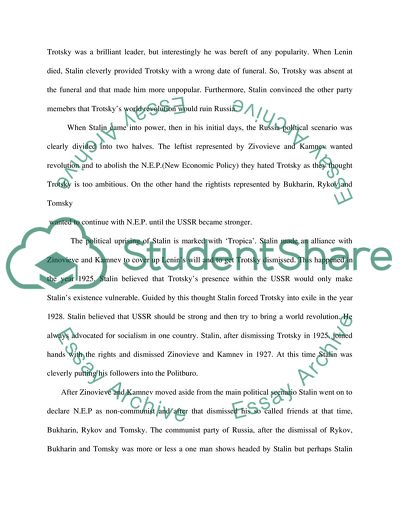Cite this document
(Stalins Terror in Russia Essay Example | Topics and Well Written Essays - 1750 words, n.d.)
Stalins Terror in Russia Essay Example | Topics and Well Written Essays - 1750 words. https://studentshare.org/politics/1710293-compare-and-contrast-the-hitler-and-stalin-dictatorships-up-untill-1939-based-on-these-comparisons-are-they-more-similar-or-not
Stalins Terror in Russia Essay Example | Topics and Well Written Essays - 1750 words. https://studentshare.org/politics/1710293-compare-and-contrast-the-hitler-and-stalin-dictatorships-up-untill-1939-based-on-these-comparisons-are-they-more-similar-or-not
(Stalins Terror in Russia Essay Example | Topics and Well Written Essays - 1750 Words)
Stalins Terror in Russia Essay Example | Topics and Well Written Essays - 1750 Words. https://studentshare.org/politics/1710293-compare-and-contrast-the-hitler-and-stalin-dictatorships-up-untill-1939-based-on-these-comparisons-are-they-more-similar-or-not.
Stalins Terror in Russia Essay Example | Topics and Well Written Essays - 1750 Words. https://studentshare.org/politics/1710293-compare-and-contrast-the-hitler-and-stalin-dictatorships-up-untill-1939-based-on-these-comparisons-are-they-more-similar-or-not.
“Stalins Terror in Russia Essay Example | Topics and Well Written Essays - 1750 Words”. https://studentshare.org/politics/1710293-compare-and-contrast-the-hitler-and-stalin-dictatorships-up-untill-1939-based-on-these-comparisons-are-they-more-similar-or-not.


